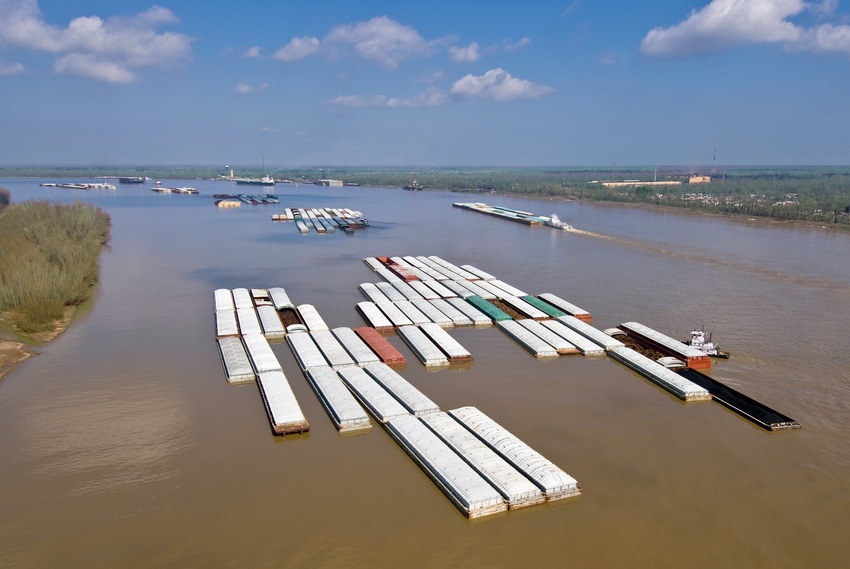Stakeholders determine opportunities to enhance nation's infrastructure.
January 30, 2018

As the U.S. increasingly examines and explores the need to enhance its multi-modal transportation system, many suggestions from policy-makers and constituents have been long on ambition but short on specifics. Further, the agriculture industry remains concerned that the transportation interests of urban areas could exclude the interests of rural areas.
In an effort to ensure that the transportation needs of the U.S. soybean industry are understood and considered in the midst of this national debate, the Soy Transportation Coalition (STC) recently released its “Top 10 Most Wanted List” of infrastructure priorities.
“Farmers should realize that if we are unwilling to promote the transportation solutions that would benefit our industry, we should not expect others to do so,” said STC chairman Gerry Hayden, a soybean farmer from Calhoun, Ky. “During this pivotal time in which the White House and Congress are developing a strategy for improving our multi-modal transportation system, it is critical the farmer perspective has a seat at the table.”
Given how soybeans and many agricultural products have arguably the most diverse and elongated supply chain of any industry, the list highlights opportunities to enhance rural roads and bridges, highways and interstates, freight rail service, the inland waterway system and ports. The STC board of directors also decided to simply list the top 10 priorities rather than ranking them against each other.
The top 10 most wanted infrastructure priorities include:
Maintain and rehabilitate locks and dams to significantly reduce the potential for unexpected, widespread and prolonged failure. Priority should be devoted to ensuring the reliability of locks and dams along the nation’s inland waterways. Available funding for new construction of locks and dams should be directed first to locks and dams 20-25 on the Mississippi River.
Dredge the lower Mississippi River between Baton Rouge, La., and the Gulf of Mexico to 50 ft.
Ensure that the Columbia River shipping channel from Portland, Ore., to the Pacific Ocean is maintained at no less than 43 ft.
Permit six-axle, 91,000 lb. semis to operate on the interstate highway system.
Increase the federal tax on gasoline and diesel fuel by 10 cents/gal., and index the tax to inflation. Ensure that rural areas receive proportionate, sufficient funding from the fuel tax increase.
Provide greater predictability and reliability of funding for the locks and dams along the inland waterway system.
Provide block grants to states to replace the top 20 most critical rural bridges.
Provide grants so states can implement rural bridge load testing projects to more accurately diagnose which bridges are sufficient and which are deficient.
Ensure full utilization of the Harbor Maintenance Trust Fund for port improvement initiatives.
Provide a permanent (or at least multiyear) extension of the short-line railroad tax credit.
“In developing the list, the Soy Transportation Coalition board of directors did not want to simply promote those infrastructure projects with the largest price tag,” Hayden explained. “Some of the items on the list certainly do involve more federal investment, which we believe is appropriate. However, we also believe many of our transportation challenges can be addressed by implementing smarter regulations and by practicing better stewardship of taxpayer dollars.”
Mike Steenhoek, STC executive director, said when it comes to transportation, he would rather the federal government be “predictably good than sporadically great.”
He added, “In order for the soybean industry to remain profitable, we must be responsive and nimble in an increasingly dynamic global marketplace. We, therefore, need the federal government to help provide and maintain our multi-modal transportation network in a condition that inspires confidence and future investment.”
According to Steenhoek, one of the best ways to accomplish this is for the federal government to promote greater predictability and reliability in how U.S. transportation assets are maintained and how funding is provided, which is currently not occurring.
“We are hopeful that by calling greater attention to a number of the specific transportation needs of the soybean industry and much of U.S. agriculture, the federal government will become more of a facilitator of our global competitiveness and less of an obstacle to it,” he said.
You May Also Like
.png?width=300&auto=webp&quality=80&disable=upscale)


